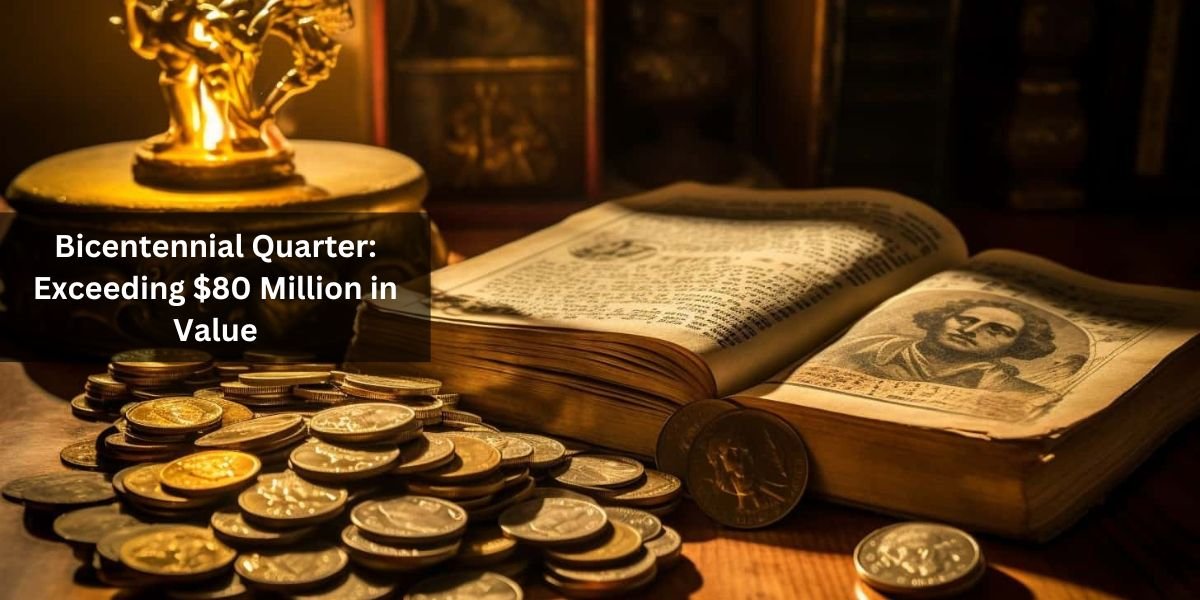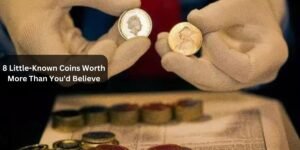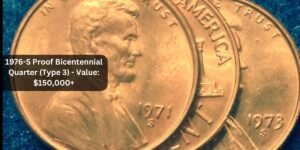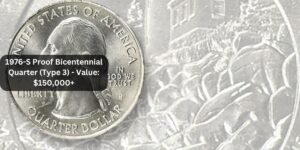Hey there, numismatists and coin enthusiasts! Have you ever heard of the Bicentennial Quarter? If not, you’re in for a treat because this humble coin has quite the remarkable story to tell. Strap in as we uncover how a seemingly ordinary quarter became a symbol of extraordinary value, exceeding a staggering $80 million.
The Bicentennial Quarter: A Brief History
Back in 1975 and 1976, the United States Mint celebrated the 200th anniversary of American independence with a special series of coins known as the Bicentennial coins. Among them was the Bicentennial Quarter, featuring a unique design commemorating the nation’s bicentennial celebrations.
The Hunt for Rarity: Error Coins
Fast forward to the present day, and collectors around the world are on the hunt for rare and valuable coins to add to their collections. One particular type of rarity that drives collectors wild is error coins—coins with mistakes or anomalies in their production process.
The $80 Million Quarter: The Story Unfolds
Enter the Bicentennial Quarter with a peculiar error—the missing mint mark. Mint marks, indicating where a coin was minted, are typically found on the obverse (heads) side of U.S. coins. However, a small number of Bicentennial Quarters were struck without mint marks, making them incredibly rare and desirable to collectors.
Rarity Meets Demand: Soaring Values
As news of the missing mint mark Bicentennial Quarters spread, collectors scrambled to find these elusive coins, driving up demand and prices. What started as a curiosity quickly turned into a frenzy, with some examples of the coin fetching prices exceeding $80 million in total—a staggering sum for a single quarter!
The Quest Continues: Uncovering Hidden Treasures
Despite the astronomical prices already paid for some Bicentennial Quarters, the quest for these rare coins continues. Collectors scour flea markets, estate sales, and online auctions in search of that elusive missing mint mark, hoping to strike gold in the form of a valuable error coin hiding in plain sight.
Conclusion
In the world of coin collecting, rarity reigns supreme, and the Bicentennial Quarter with the missing mint mark stands as a shining example of just how valuable a seemingly ordinary coin can become. So, next time you come across a quarter in your pocket change, take a closer look—you never know what hidden treasures you might uncover!
FAQs
1. How can I tell if I have a Bicentennial Quarter with a missing mint mark?
Bicentennial Quarters with missing mint marks are quite rare, but you can identify them by examining the obverse side of the coin for the absence of a mint mark letter (P for Philadelphia Mint, D for Denver Mint, etc.).
2. Are all Bicentennial Quarters valuable?
While most Bicentennial Quarters are common and have nominal value, those with unique errors or anomalies, such as the missing mint mark, can be highly valuable to collectors.
3. Where can I sell a valuable coin like the Bicentennial Quarter?
You can sell valuable coins through reputable coin dealers, auction houses specializing in numismatics, online coin marketplaces, or collectors’ forums.
4. What should I do if I think I have a rare coin?
If you believe you have a rare or valuable coin, it’s a good idea to have it authenticated and appraised by a professional coin grading service or experienced numismatist to determine its authenticity and potential value.
5. Are there other valuable error coins besides the Bicentennial Quarter?
Yes, there are many types of error coins, including double dies, off-center strikes, and planchet errors, each with its own unique characteristics and value potential.




